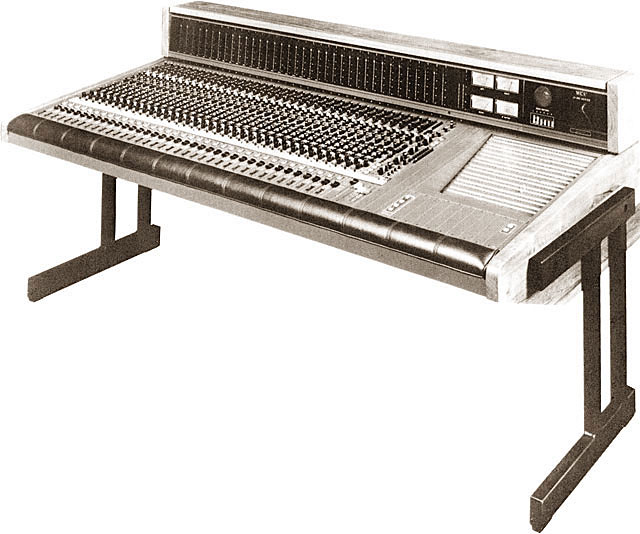

Up to now, MCI sold two console ranges - the JH-400 Series which was a smaller more economical console and the JH-500 series with more sends, 4-band EQ and so on. The JH-600 Series was intended to replace the JH-400 Series. I'm sure MCI intended to produce a JH-700 to replace the JH-500, but that never happened.
The JH-600 audio circuitry was completely re-designed from the ground up. Gone were the troublesome relays, replaced by FET switching. Audio stages went to standard ICs - the 5534A (MCI2003P) and the 5532 (MCI2004), running off ±18V power rails. Standard op-amps can only manage about +22dBm maximum level - not enough headroom for a nominal +4dBm signal level. The internal nominal signal level of the JH-600 is -2dBm, allowing for an internal headroom of 24dB. In the JH-600, op-amps were always configured in inverting mode. Audio transformers were replaced by electronically balanced input and output stages. However, the JH-600 retained balancing transformers on all sends and monitor feeds, as well as providing 4 patchable transformers for dealing with unbalanced outboard gear.
As a result of the above refinements, the JH-600 performed as well as or better than any analogue console produced since.
The JH-600 console and the JH-24 Multitrack were released around the same time. Both of these products were similar in design. For example, the mic preamp for the JH-600 was the same design as the tape head preamp in the JH-24. The ±18V Regulator Chimneys in the JH-600 Power Supply were interchangeable with the JH-24 Audio Power Supply (except the current sense resistors had a slightly different value). The same thing applied to the FET switching circuits and a unique electronically balanced transformerless line driver.

With conventional preamps, the mic transformer steps up the input voltage by 20dB. Without the transformer, the electronics must have 20dB more gain and the noise floor of older designs under these conditions would have been unacceptable. MCI went to an elaborate instrumentation amp design with low noise transistors on the front end for the transformerless preamp. It should be mentioned that no transformerless design will be as quiet as a good transformer design, but these days with close micing recording this issue is irrelevant with a good transformerless design.
MCI placed the FETs on the inverting node of an op-amp. Since the FET is only either on or off, any non-linearities due to the FET are insignificant. Since the inverting node of an op-amp is always at a constant voltage even when an audio signal is present, the FET gate always sees a constant control voltage, further reducing any non-linearities due to the FET. FET switching has proven itself to be far more reliable than relay switching of audio signals. Another advantage of FET switching of audio signals is that they can do a smooth fade between the on and off states.
Until now, most transformerless balanced line drivers in audio gear consisted of two unbalanced outputs 180° out of phase. The problem with this is that when connected to an unbalanced input, only one side is connected, resulting in a 6dB loss of level. Even worse, if the other side was shorted to ground, this often resulted in cross-talk, distortion and sometimes damage to the line driver. It's amazing how many products made in the 90's still had these types of line drivers.
MCI came up with a completely different design (at least, it was the first time I had seen such a design). This circuit tolerated one side of its output being shorted to ground and eliminated the 6dB loss issue when connected to an unbalanced input. In other words, it behaved like a transformer balanced output. Other manufacturers copied this circuit and it even turned up in encapsulated form in Sony professional video recorders.